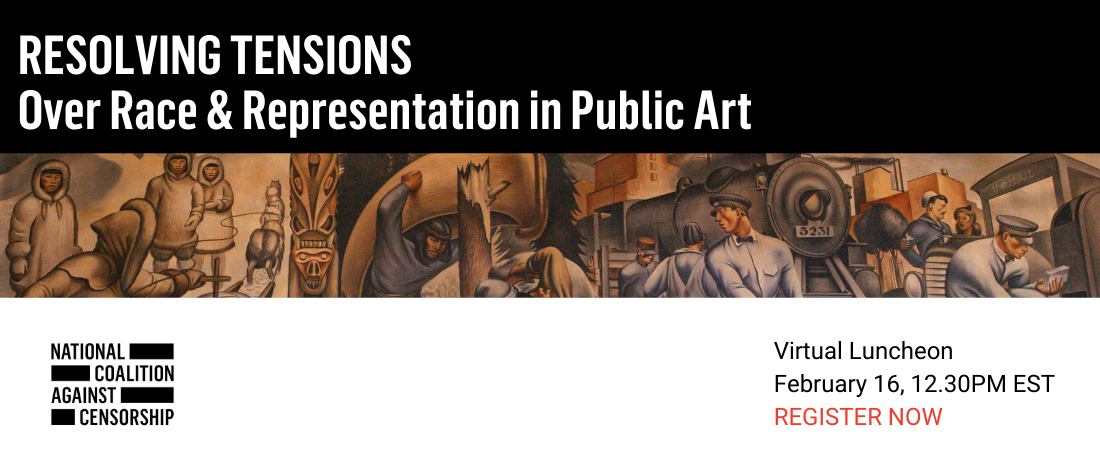Works Progress Administration (WPA) murals on college campuses occupy a special category on the spectrum of fraught public art. Decidedly different from Confederate monuments and dormitories named after slave-holding benefactors, yet still troubling due to the flattened, exclusionary histories they portray. While some muralists inserted details that may be read as subversive and acknowledge America’s racist history, others perpetuated racial stereotypes in paint and stone. Aside from providing work to artists during the Great Depression, these murals in schools, libraries, and post offices were meant to uplift economically downtrodden communities. Today, however, universities are acknowledging that these works pose barriers for inclusion—and developing solutions to satisfy a host of constituencies.
View the conversation:
NCAC’s virtual luncheon explored the various approaches to resolving tensions around such work–including shrouding or relocating artworks, commissioning new works, innovative course offerings, and public programs. Our participants also examined the context and outcomes in a select number of cases.
Participants:
Karyn Olivier, Artist and Associate Professor of Sculpture at Temple University, Philadelphia
Dr. Adriene Lim, Dean of Libraries at the University of Maryland, College Park
Anthony Huffman, Brooklyn-based scholar, curator, and cultural critic


